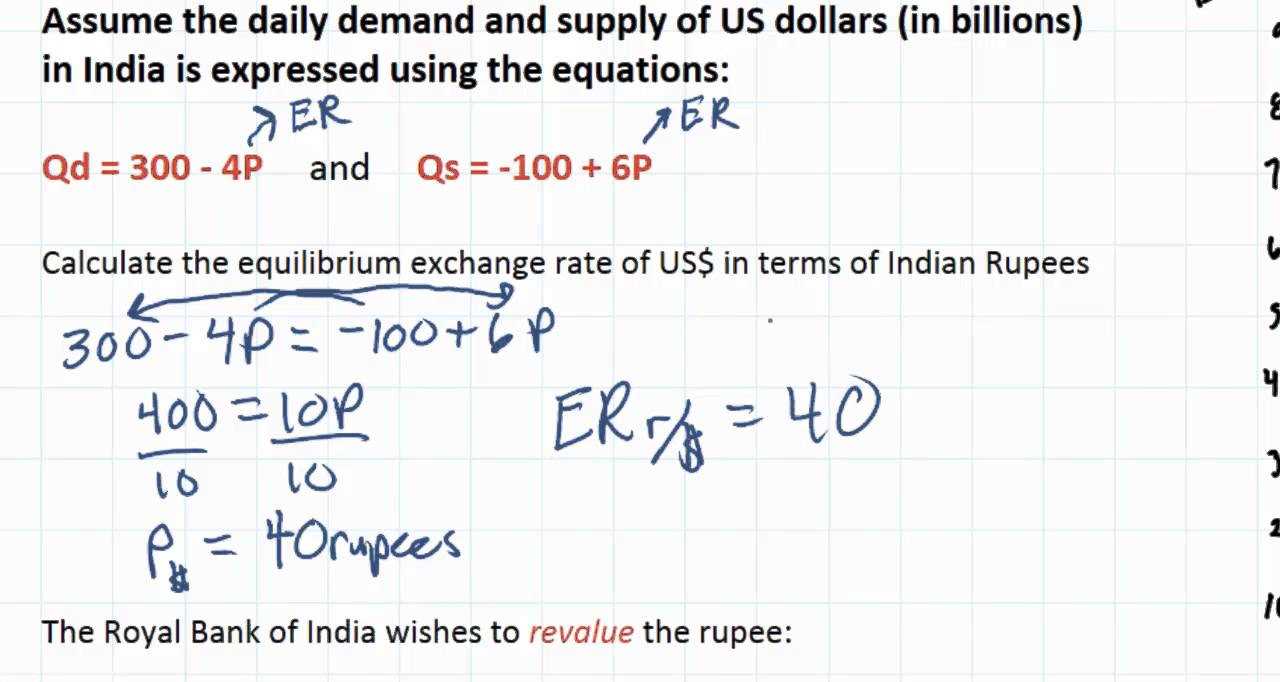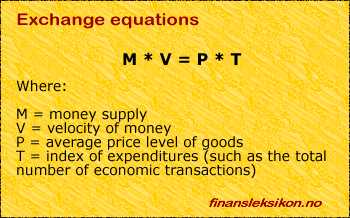Equation of Exchange: Definition and Different Formulas

The equation of exchange is a fundamental concept in economics that helps to understand the relationship between money supply, velocity of money, price level, and real output. It was first introduced by the economist Irving Fisher in his book “The Purchasing Power of Money” in 1911.
The equation of exchange can be expressed in different formulas, but the most common one is:
M x V = P x Y
Where:
- M represents the money supply
- V represents the velocity of money
- P represents the price level
- Y represents the real output
This equation states that the total amount of money spent in an economy (M x V) is equal to the total value of goods and services produced (P x Y). In other words, it shows the relationship between the quantity of money in circulation and the value of economic transactions.
The equation of exchange can also be rearranged to calculate other variables. For example:
P = (M x V) / Y
This formula allows us to calculate the price level by dividing the total amount of money spent (M x V) by the real output (Y). It shows how changes in the money supply or velocity of money can affect the overall price level in an economy.
Similarly, we can calculate the velocity of money by rearranging the equation as:
V = (P x Y) / M
This formula shows how changes in the price level or real output can affect the velocity of money. It represents the average number of times a unit of currency is used to purchase goods and services in a given period.
Overall, the equation of exchange provides a framework for analyzing the relationship between money, prices, and economic activity. It helps economists and policymakers understand the factors that influence inflation, economic growth, and monetary policy.
ECONOMICS catname

The equation is expressed as:
M * V = P * Q
Where:
- M represents the total supply of money in the economy
- V represents the velocity of money circulation, or the average number of times a unit of currency is spent in a given period of time
- P represents the average price level in the economy
- Q represents the quantity of goods and services produced in the economy
The equation can be rearranged to solve for different variables:
- M = (P * Q) / V: This formula calculates the total supply of money in the economy based on the average price level, the quantity of goods and services produced, and the velocity of money circulation.
- V = (P * Q) / M: This formula calculates the velocity of money circulation based on the average price level, the quantity of goods and services produced, and the total supply of money in the economy.
- P = (M * V) / Q: This formula calculates the average price level in the economy based on the total supply of money, the velocity of money circulation, and the quantity of goods and services produced.
- Q = (M * V) / P: This formula calculates the quantity of goods and services produced in the economy based on the total supply of money, the velocity of money circulation, and the average price level.
Disclaimer: This article is for informational purposes only and should not be considered as financial or investment advice.

Emily Bibb simplifies finance through bestselling books and articles, bridging complex concepts for everyday understanding. Engaging audiences via social media, she shares insights for financial success. Active in seminars and philanthropy, Bibb aims to create a more financially informed society, driven by her passion for empowering others.
